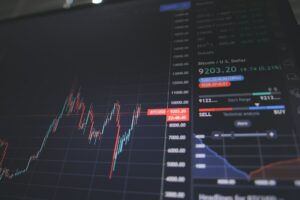Maximizing Profit: Effective Strategies for Forex Trading
Forex trading, also known as foreign exchange trading, is the buying and selling of currencies with the aim of making a profit. With a daily trading volume of over $6 trillion, the forex market is the largest and most liquid financial market in the world. However, trading forex can be challenging and risky without the right strategies. In this article, we will explore some effective strategies that can help maximize profits in forex trading.
1. Develop a Trading Plan:
Before entering the forex market, it is crucial to have a well-defined trading plan. A trading plan outlines your goals, risk tolerance, preferred trading style, and specific entry and exit strategies. It helps you stay disciplined and focused during trading, reducing the impact of emotional decision-making. A trading plan should also include risk management techniques, such as setting stop-loss and take-profit levels, to protect your capital.
2. Understand Technical Analysis:
Technical analysis involves analyzing historical price data and identifying patterns, trends, and support/resistance levels to make trading decisions. Learning how to read and interpret charts, indicators, and oscillators can provide valuable insights into market movements. Technical analysis helps traders identify potential entry and exit points, manage risk, and increase the probability of profitable trades.
3. Utilize Fundamental Analysis:
Fundamental analysis involves evaluating economic, political, and social factors that influence currency values. These factors include interest rates, inflation, GDP growth, employment data, geopolitical events, and central bank policies. By understanding the fundamental drivers behind currency movements, traders can make informed trading decisions. Combining fundamental analysis with technical analysis can provide a comprehensive view of the market.
4. Use Risk Management Techniques:
Risk management is a crucial aspect of forex trading. It involves implementing strategies to protect your capital and minimize losses. One common risk management technique is setting stop-loss orders, which automatically close a trade if the price reaches a predetermined level. Another technique is position sizing, where traders determine the appropriate trade size based on their risk tolerance and the potential reward-to-risk ratio. Risk management techniques help traders stay in control and avoid catastrophic losses.
5. Practice Proper Money Management:
Money management is closely related to risk management and involves allocating and managing your trading capital effectively. It is essential to only risk a small percentage of your capital on each trade, typically no more than 2% to 5%. This ensures that a series of losing trades does not wipe out your account. Additionally, diversifying your trades across different currency pairs and avoiding overtrading can help spread the risk and increase the chances of long-term profitability.
6. Keep Up with Market News:
Staying informed about market news and events is crucial for forex traders. Economic releases, such as interest rate decisions, employment reports, and GDP data, can significantly impact currency values. Traders should regularly monitor economic calendars, news outlets, and central bank announcements to stay updated on relevant market developments. Being aware of upcoming events allows traders to adjust their positions or stay on the sidelines during periods of high volatility.
7. Practice on Demo Accounts:
Before risking real money, it is advisable to practice trading on demo accounts provided by forex brokers. Demo accounts simulate real market conditions using virtual funds, allowing traders to test their strategies and gain experience without incurring any financial risk. This practice helps traders understand the mechanics of trading platforms, refine their strategies, and build confidence before transitioning to live trading.
8. Continuous Learning and Adaptation:
The forex market is dynamic, and strategies that worked in the past may not be effective in the future. Therefore, it is essential to continuously learn, adapt, and evolve as a trader. Stay updated with industry trends, attend webinars or seminars, read books, and follow reputable forex educational websites and forums. Surrounding yourself with a community of experienced traders can provide valuable insights and help refine your trading strategies.
In conclusion, maximizing profit in forex trading requires a combination of effective strategies, disciplined execution, and continuous learning. Developing a solid trading plan, understanding technical and fundamental analysis, implementing risk and money management techniques, staying informed about market news, and practicing on demo accounts are all crucial steps towards achieving success in forex trading. Remember, trading forex involves risk, and it is essential to approach it with caution and proper knowledge.





